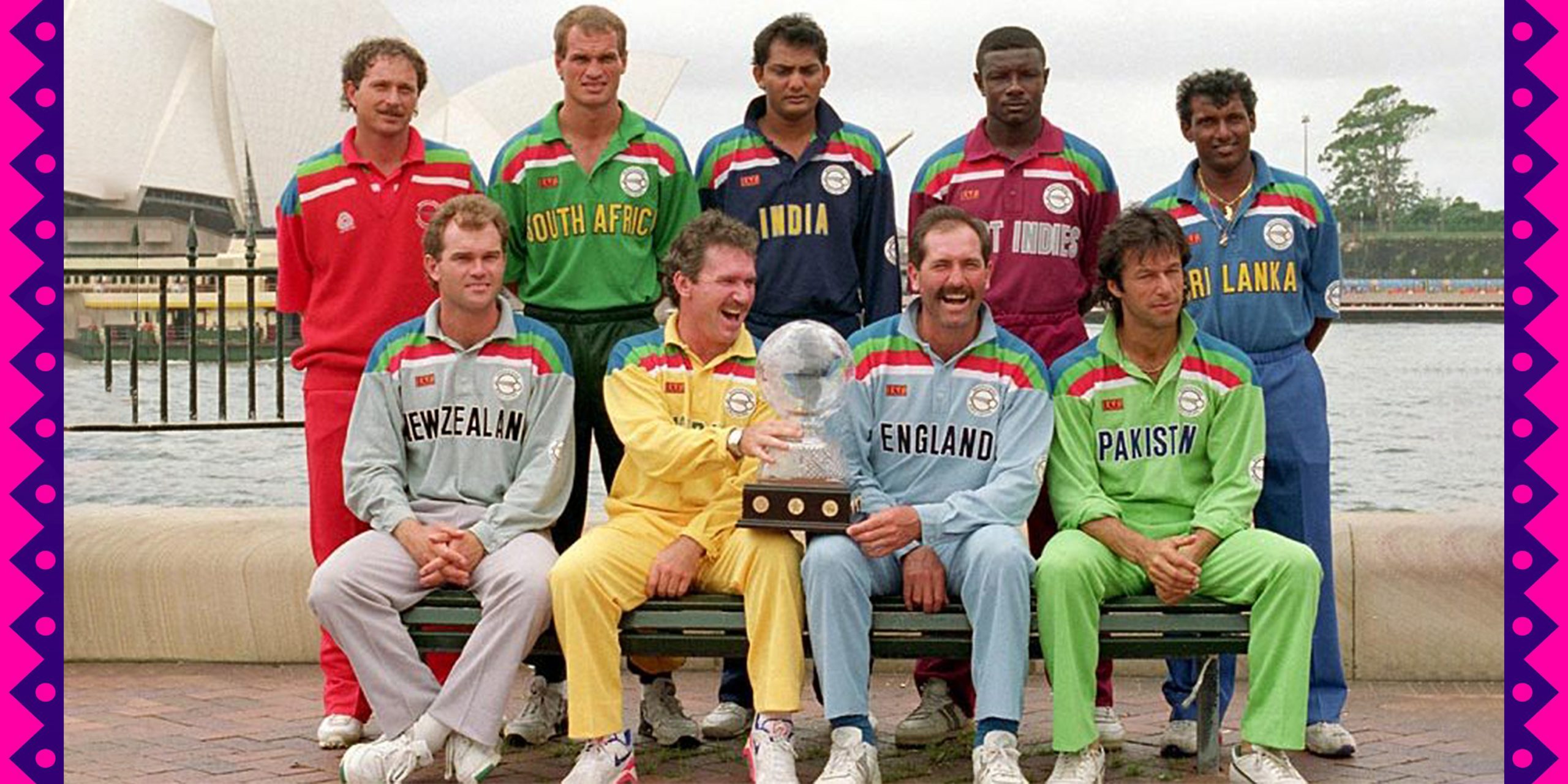Statistical Survey
The quest for cricketing supremacy for the prized crown of the 2023 ICC Cricket World Cup is all set to unfold with the inaugural clash on October 5th between two finalists of the 2019 edition, England and New Zealand. The gigantic Narendra Modi Stadium in Ahmedabad with a staggering capacity of 132,000 is the venue where the 13th edition of the ICC World Cup cricketing extravaganza will kick off.
A fierce battle of nerves and skills awaits as the top ten teams lock horns during the gripping group stage. The competition will spread over a period of approximately six weeks at ten different venues all across India. Only the top four teams advance to the knockout stage and ultimately top two teams meet again at the Narendra Modi Stadium which will host the final of the tournament on November 19th.
Limited-over format cricket was first played in 1963 in England when the Gillette Cup was held as the first formal domestic competition of one-day limited overs. Sponsors were quick to spot potential in limited-over cricket and rolled out the “World Cricket Cup” in England in 1966 (participated by England, the Rest of the World XI and West Indies) and then again in 1967 (England, Rest of the World XI and Pakistan).
However, the 1967 series was not so successful as that tournament had poor attendance mainly due to the football euphoria that gripped England after they had won the FIFA World Cup in 1966. Four years later in 1971, the first official One Day International was played in Melbourne between England and Australia which was arranged as a replacement for the rain-affected third Ashes test. Just four years down the cricketing timeline, the year 1975 witnessed the first-ever World Cup being played in England where all six test playing nations participated along with Sri Lanka and East Africa (a team comprising players from Kenya, Tanzania, Uganda and Zambia).
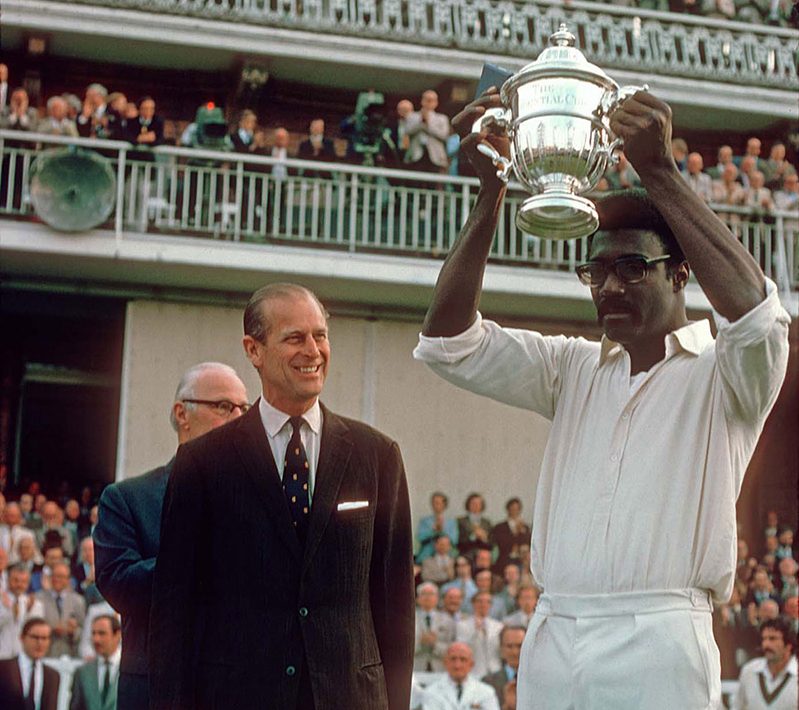
Now here is an interesting and trivial fact for all cricketing enthusiasts or perhaps one of the crickets’ lesser-known facts – before the men’s inaugural World Cup in 1975, it was women who created the history for organizing the first ever cricket World Cup in 1973. Hence, the women’s cricket World Cup is two years older than its men’s counterpart!
The forthcoming 2023 is the 13th edition of the World Cup and the first that India will host on their own as all three previous World Cups in 1987, 1996 and 2011 were co-hosted by India along with either Pakistan, Sri Lanka or Bangladesh. England has the honour of hosting five World Cups. The first three editions were all 60 overs per innings.
Since summer in England provides much longer days and ample daylight, England was considered the most optimal choice for one-day games giving the possibility of 120 over games during a normal day’s play. However, the number of overs was reduced from 60 to 50 from the 1987 World Cup and since then a one-day international game lasting for 50 overs per side has become a norm.
| Year | Tournament Duration (Days) | Host | Winner | No of Teams | Schedule Matches |
| 1975 | 15 | England | West Indies | 8 | 15 |
| 1979 | 15 | England | West Indies | 8 | 15 |
| 1983 | 17 | England | India | 8 | 27 |
| 1987 | 32 | India, Pakistan | Australia | 8 | 27 |
| 1992 | 33 | Australia | Pakistan | 9 | 39 |
| 1996 | 33 | Pakistan, India, Sri Lanka, Bangladesh | Sri Lanka | 12 | 37 |
| 1999 | 38 | England | Australia | 12 | 42 |
| 2003 | 43 | South Africa | Australia | 14 | 54 |
| 2007 | 47 | West Indies | Australia | 16 | 51 |
| 2011 | 43 | India, Sri Lanka | India | 14 | 49 |
| 2015 | 44 | Australia | Australia | 14 | 49 |
| 2019 | 46 | England | England | 10 | 45 |
- Summary of all World Cups 1975 – 2019
In all the previous 12 World Cups from 1975 to 2019, there have been 20 different teams that participated in this global event; some in all and a few in just one competition. Australia has played 94 games in the World Cup competition which is way more than any other team. Next to Australia are India (84) and England (83). On the other hand, East Africa in 1975 and Bermuda in 2007 played just three games in World Cup competitions.
Team | Matches Played | Won | Lost | NR | W/L Ratio | Success % |
Australia | 94 | 69 | 23 | 2 | 3,00 | 74.5 % |
India | 84 | 53 | 29 | 2 | 1,83 | 64.3 % |
| New Zealand | 89 | 54 | 33 | 2 | 1,64 | 61.8 % |
South Africa | 64 | 38 | 23 | 3 | 1,65 | 61.7 % |
England | 83 | 48 | 32 | 3 | 1,50 | 59.6 % |
Pakistan | 79 | 45 | 32 | 2 | 1,41 | 58.2 % |
West Indies | 80 | 43 | 35 | 2 | 1,23 | 55.0 % |
Sri Lanka | 80 | 38 | 39 | 3 | 0,97 | 49.4 % |
Bangladesh | 40 | 14 | 25 | 1 | 0,56 | 36.3 % |
Ireland | 21 | 7 | 13 | 1 | 0,54 | 35.7 % |
Zimbabwe | 57 | 11 | 42 | 4 | 0,26 | 22.8 % |
Kenya | 29 | 6 | 22 | 1 | 0,27 | 22.4 % |
Canada | 18 | 2 | 16 | 0 | 0,13 | 11.1 % |
Netherlands | 20 | 2 | 18 | 0 | 0,11 | 10.0 % |
U.A.E. | 11 | 1 | 10 | 0 | 0,10 | 9.1 % |
Afghanistan | 15 | 1 | 14 | 0 | 0,07 | 6.7 % |
Bermuda | 3 | 0 | 3 | 0 | 0,00 | 0.0 % |
East Africa | 3 | 0 | 3 | 0 | 0,00 | 0.0 % |
Namibia | 6 | 0 | 6 | 0 | 0,00 | 0.0 % |
Scotland | 14 | 0 | 14 | 0 | 0,00 | 0.0 % |
- Summary of all matches 1975 – 2019
As expected, Australia has the highest success percentage at 74.5%, all together winning five titles including three in a row from 1999 to 2007. Their dominance in the first decade of the 2000s can be judged by the fact that they had a remarkable run of 33 games without losing any. After losing a round game against Pakistan in 1999, their next defeat was in a league game, also against Pakistan in March 2011. This streak of 33 games includes the famous tied game against South Africa in 1999 and another game against Sri Lanka in 2011 that perished to rain without any result.
Next is India at 64.3% closely followed by New Zealand, South Africa, England and Pakistan with rather similar success except that despite having a rather good winning record, South Africa never made it to the finals in any World Cup competition.
| Team | World Cup Participation | Semi Final | Final | World Cup Title |
| Australia | 12 | 8 | 7 | 5 |
| India | 12 | 7 | 3 | 2 |
| West Indies | 12 | 4 | 3 | 2 |
| England | 12 | 6 | 4 | 1 |
| Pakistan | 12 | 6 | 2 | 1 |
| Sri Lanka | 12 | 4 | 3 | 1 |
| New Zealand | 12 | 8 | 2 | 0 |
| South Africa | 8 | 4 | 0 | 0 |
| Kenya | 1 | 1 | 0 | 0 |
- Performance of all teams during the semi-final and final 1975-2019
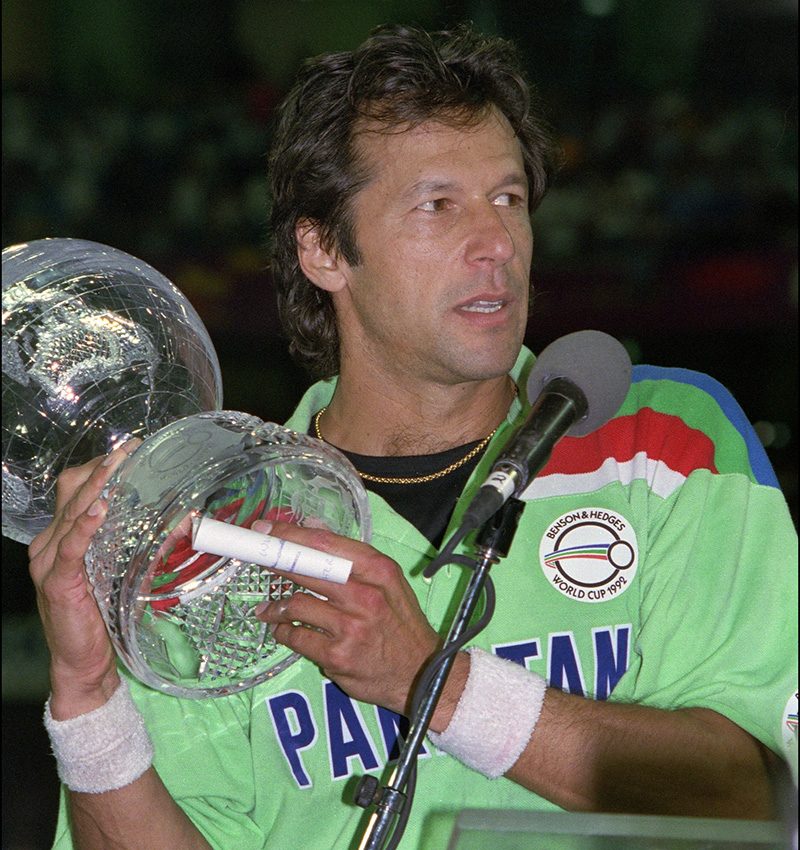
Looking at all historical data for all World Cups from 1975 until 2019 reveals how one-day cricket has evolved with time. A score of 300 and above was earlier considered invincible but that’s no longer true. Playing conditions and rules have become more conducive to batting. These changes such as field restrictions, power play, per over bouncer rule, strict wide ball policy, decision review system and many other innovative changes have made the games more interesting, and entertaining and the marketability of limited over global tournaments has increased manifold.
Runs rate and average runs scored per game are two very good indications of how limited-over games have changed over time. The first two World Cups (1975, 1979) produced an average run rate under 4 per over, the next seven competitions (1983 to 2007) had run rates hovering between 4 and 5 and the last three World Cups (2011 to 2019) produced over 5 runs per over.
Considering the bating-friendly tracks for the 2023 competition in India, this trend is expected to continue as one shouldn’t be surprised if the average run rate goes beyond 6 per over in 2023!
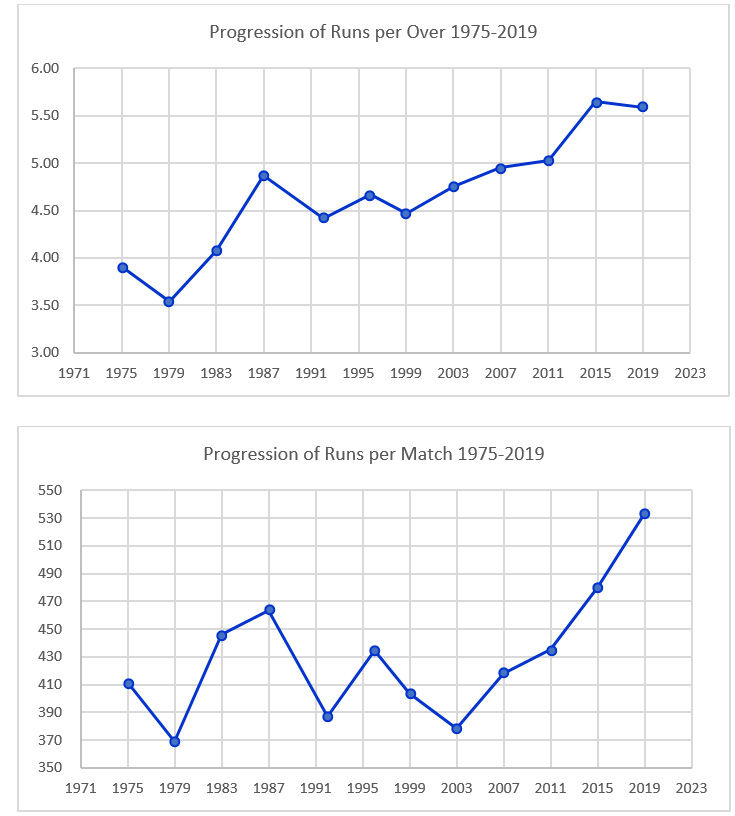
Now let us look at those who have been leading performers at the World Cup games over the years. In batting, the default name is obviously Sachin Tendulkar who is the only batter with over 2000 World Cup runs. All together there are 21 batters with over 1000 career runs in World Cup competition. Sri Lankan leads this league as five batters from Sri Lanka (Sangakkara, Jayasuriya, Dilshan, Jayawardene and Aravinda de Silva) have scored over 1000. Three each from Australia (Ponting, Gilchrist, Mark Waugh), South Africa (De Villers, Kallis, Gibbs), India (Tendulkar, Kohli, Ganguly) and West Indies (Lara, Gayle, Richards), two from New Zealand (Fleming, Taylor) and one each from Pakistan (Miandad) and Bangladesh (Shakib) make this elite list. Rather surprisingly, no English batter has been able to score 1000 runs in World Cup career!
Player | Matches | Runs | Avg | HS | 100s | 50s | S/R |
SR Tendulkar | 45 | 2278 | 56.95 | 152 | 6 | 15 | 88.98 |
RT Ponting | 46 | 1743 | 45.87 | 140* | 5 | 6 | 79.95 |
KC Sangakkara | 37 | 1532 | 56.74 | 124 | 5 | 7 | 86.55 |
BC Lara | 34 | 1225 | 42.24 | 116 | 2 | 7 | 86.27 |
AB de Villiers | 23 | 1207 | 63.53 | 162* | 4 | 6 | 117.30 |
- World Cup career top batters (1975-2019)
In the bowling department, 29 bowlers have taken 30 or more wickets. Glenn McGrath leads the table with 71 wickets. These top 29 include six each from Australia (McGrath, Starc, Lee, Hogg, Tait, Warne) and New Zealand (Boult, Oram, Vettori, Southee, Harris, Bond), five from Pakistan (Wasim, Wahab, Imran, Shahid Afridi, Shoaib), four from India (Zaheer, Srinath, Kumble, Shami), three each from South Africa (Imran Tahir, Donald, Pollock) and Sri Lanka (Muralitharan, Malinga, Vaas) and one each from England (Botham) and Bangladesh (Shakib).
| Player | Matches | Overs | Runs | Wkts | Avg | Best | SR | 4w |
| GD McGrath | 39 | 325.5 | 1292 | 71 | 18.20 | 7-15 | 27.5 | 2 |
| M Muralitharan | 40 | 343.3 | 1335 | 68 | 19.63 | 4-19 | 30.3 | 4 |
| SL Malinga | 29 | 232.2 | 1281 | 56 | 22.88 | 6-38 | 24.8 | 3 |
| Wasim Akram | 38 | 324.3 | 1311 | 55 | 23.84 | 5-28 | 23.8 | 3 |
| MA Starc | 18 | 156.1 | 726 | 49 | 14.82 | 6-28 | 14.8 | 6 |
One-day cricket is all about having quality all-rounders. Teams having good all-rounders definitely have an edge over other teams. A simple yardstick to gauge a quality all-rounder is his art of balancing his batting and bowling prowess – consistently scoring runs at a higher average and taking wickets at a lower average. For example, an all-rounder who has a batting average of 50 and a bowling average of 25 is superior to the one who has a batting average of 55 and a bowling average of 35. In other words, the ratio between batting and bowling averages is a good and reliable indication of the strength and ability of an all-rounder, the higher the ratio, the better the all-rounder. Now setting a qualification criterion of 500 runs and 25 wickets in World Cup games, there are only five players (Steve Waugh, Jayasuriya, Shakib, Kapil and Imran) who meet these standards.
Using the classic all-rounder ranking system (one point for each run scored, 5 points for each catch and 20 points for each wicket taken), multiplying the total points by the ratio of batting and bowling average and dividing by the number of matches played gives a very realistic all-round ability points offering a good indication about the quality of an all-rounder. In World Cup career, Shakib Al Hasan has 1146 runs (1146 batting points), 34 wickets (34 x 20, 680 bowling points), and 8 catches (8 x 5, 40 fielding points). Adding all, he bags 1866 points. His batting and bowling averages are 45.84 and 35.94 respectively, and the ratio of these averages is 1.28. Multiplying 1866 by this ratio of 1.28 gives a total all-round point of 2380. Divide 2380 total matches (29) played by Shakib, 2380/29 returns his all-rounder points per game.

Interesting to note that three (Imran, Kapil, Waugh) out of five all-time best all-rounders are also World Cup winning captains!!
Now moving to the 2023 World Cup – which will be the 13th edition of this global event – has a lot to offer in terms of prize money and other competition awards. Besides a glittering 60-cm high weighing 11 kg hand-engraved silver trophy with a golden globe designed by Garrad & Company in London was first presented in the 1999 World Cup. The original trophy, which has the names of all the previous winners inscribed on its base, is always kept with ICC and winning teams are presented with a replica of the original trophy. A fact not known to many is that the trophy that was won by India in 1983 was damaged when Hindu militants attacked the Indian Cricket Board headquarters opposing Pakistan’s tour to India for the 1998-99 series.
In addition to this trophy, there are accumulative cash awards of ten million US dollars.
| Stage | Teams | Amount (US$) | Total (US$) |
| World Cup Winners | 1 | 4 000 000 | 4 000 000 |
| World Cup Runners-Up | 1 | 2 000 000 | 2 000 000 |
| World Cup Losing Semi-Finalists | 2 | 800 000 each | 1 600 000 |
| Winners of each league stage match | 45 | 40 000 each | 1 800 000 |
| Teams that do pass the league stage | 6 | 100 000 each | 600 000 |
| Total US$ | 10 000 000 | ||
Few tournament-based awards come in addition to these cash awards such as the Golden Bat Award, Golder Ball Award and Player of the Tournament Award that will also carry handsome cash incentives.
The imminent question that we all have; who will rise to the occasion to seize the 2023 title? Obviously, all teams are vying for a spot in the semi-finals. Certain teams like the Netherlands, Afghanistan, Bangladesh and Sri Lanka are expected to bow out in the group stage but teams like Australia, Pakistan, New Zealand and South Africa are likely to make semi-final line-up along with anticipated powerhouses India and England. Current forms based on the last four years’ performance may be a good reflection of team strength but often present a dicey picture. For example, Pakistan has over 72% success rate for matches played since the last World Cup in 2019 winning 22 out of 31 matches. However, a closer look reveals that 13 out of 22 of these victories were against weaker opposition such as Zimbabwe, Netherlands, West Indies, Sri Lanka and Afghanistan.
| Team | Mat | Won | Lost | NR | W/L | RPO | Succ % |
| Pakistan | 31 | 22 | 8 | 1 | 2.75 | 5.70 | 72.6 % |
| India | 57 | 34 | 20 | 3 | 1.70 | 6.05 | 62.3 % |
| Bangladesh | 45 | 27 | 16 | 2 | 1.69 | 5.23 | 62.2 % |
| New Zealand | 36 | 21 | 13 | 2 | 1.62 | 5.67 | 61.1 % |
| Australia | 36 | 21 | 15 | 0 | 1.40 | 5.68 | 58.3 % |
| South Africa | 35 | 18 | 13 | 4 | 1.38 | 5.91 | 57.1 % |
| England | 36 | 18 | 15 | 3 | 1.20 | 6.07 | 54.2 % |
| Sri Lanka | 50 | 26 | 22 | 2 | 1.18 | 5.41 | 54.0 % |
| Afghanistan | 27 | 14 | 12 | 1 | 1.17 | 4.97 | 53.7 % |
| Netherlands | 34 | 8 | 24 | 2 | 0.33 | 4.95 | 26.5 % |
- Result summary of all participating teams since the 2019 World Cup
India is probably the most formidable team capable of clinching the 2023 trophy. Playing in front of their own crowd and batting on pitches that typically favour the strengths of Indian batting, India is poised to be a force to reckon with. This scenario is no different than the 2011 World Cup where similar advantages propelled India to a resounding victory. Many of the cricketing experts and pundits quite rightly consider India a hot favourite to triumph for the third time in 2023.
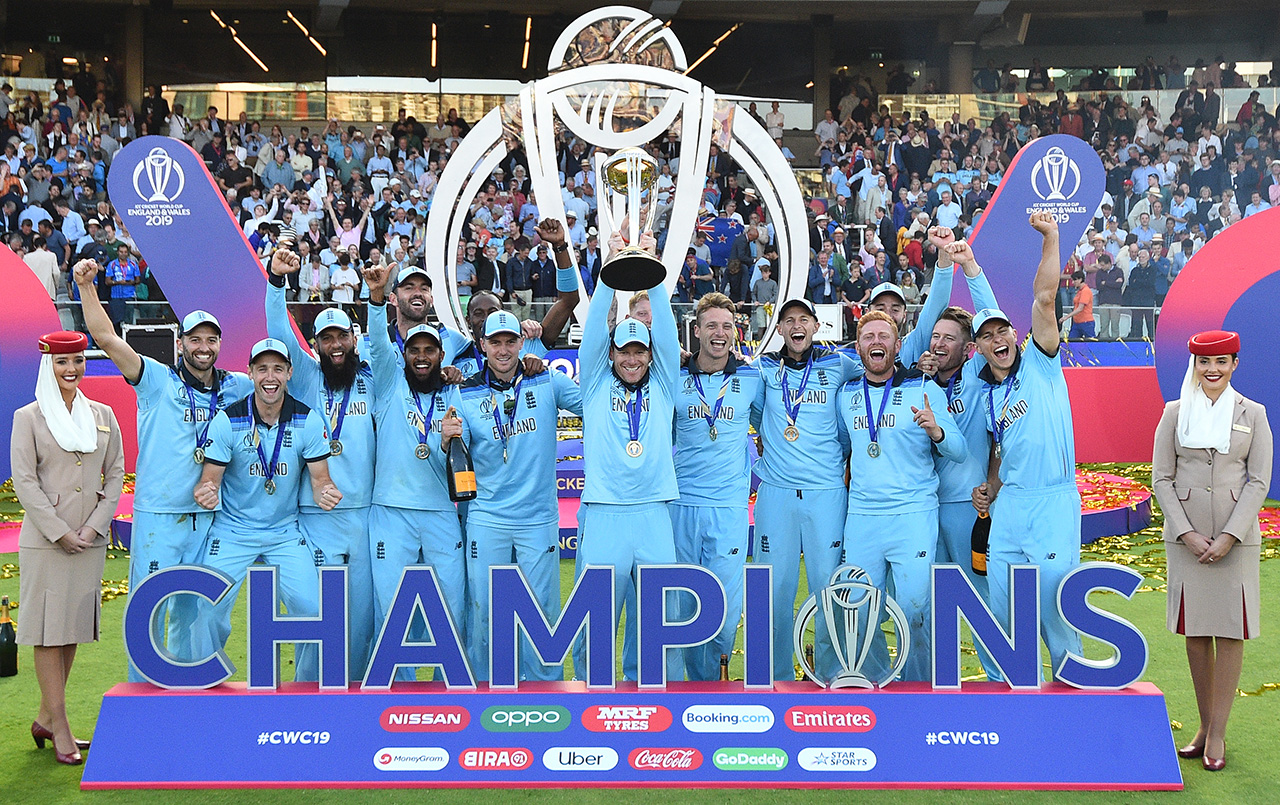
England, on the other hand, is the most balanced side with a very aggressive playing style that has almost all bases fully covered. They have depth in their batting capable of tearing apart any bowling attack with powerful batting, their bowling has variety with some serious pace and swing. It is therefore safe to assume this English team is set to qualify for the semi-final. Interesting to note that since the last World Cup in 2019, both India and England have been scoring runs in ODI at a run rate in excess of six per over as this could be a decisive factor for this World Cup where a team having strong batting will have huge advantage.
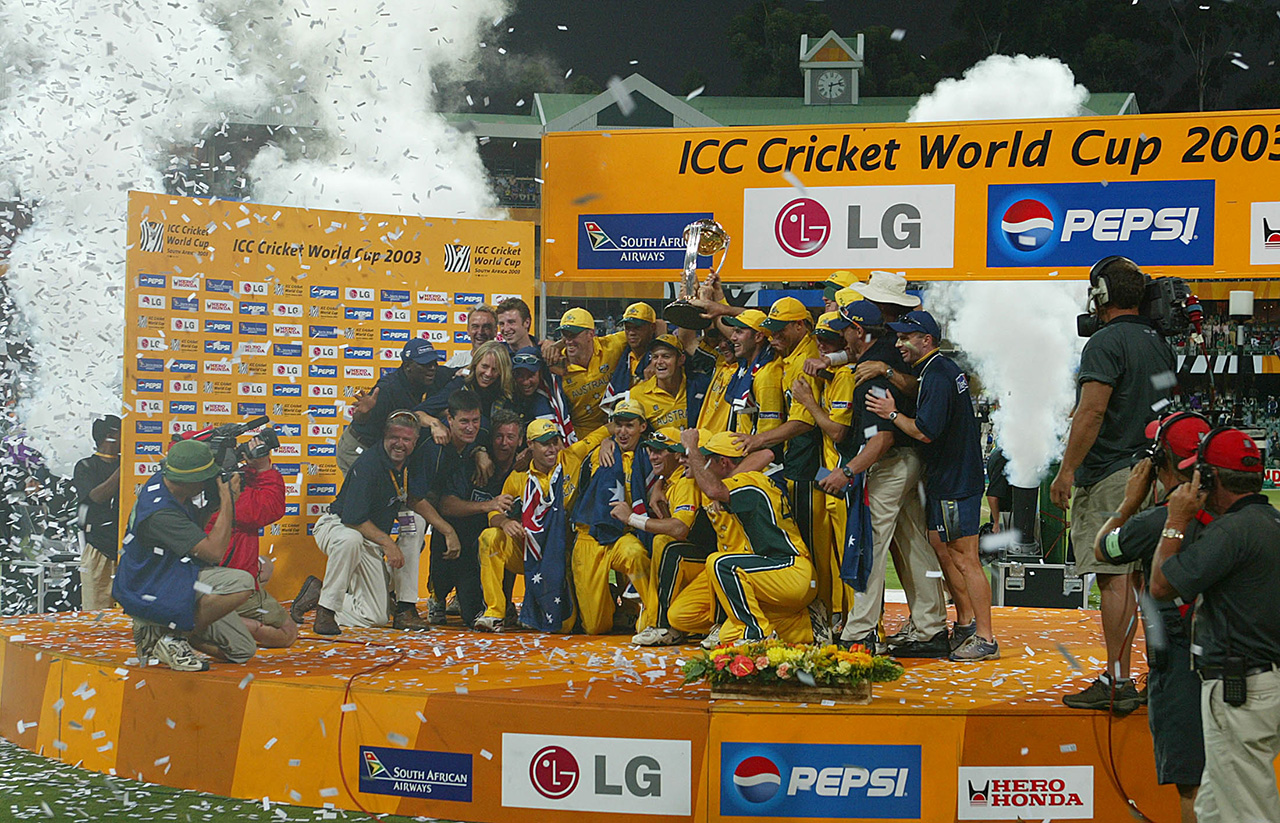
Five times world title holders Australia is by far the most consistent side that has a good balance of youth and experience. Their recent record may not appear to be very impressive, but we all know they play their best cricket when it matters most. Previous tournaments for both ODI and T20 have shown they hit the peak at the right time. Let us see if indeed they are ready to repeat their past heroism to win their sixth title!
South Africa could prove to be the dark horse of the 2023 edition. They appeared in four semi-finals in previous World Cup competitions but failed to win any. The long-standing choker tag continues to haunt them. Nevertheless, this team has the talent and potential to overcome this challenge. New Zealand is no different than South Africa in many respects. Even though they often go all the way as they did in 2015 as well as in 2019 but couldn’t win when it matters most. One can argue 2019 final loss to England had a lot to do with their luck than on any other reasons as full 100 overs as well as the Super Over couldn’t decide a winner. Finally, a winner was decided based on the boundary count! Hard to believe a World Cup final winner was decided based on the number of boundaries. Many felt it was a bit harsh but that’s how were the tournament rules in 2019.
Based on the recent form, Pakistan appears to be the most successful team that currently sits at the number one ranking for ODIs. However, it is worth noting many of these victories came against relatively weaker opponents. A lot is said about Pakistan’s bowling attack, but this continues to be erratic and unpredictable. A striking example comes from their recent series against Afghanistan. Pakistan rattled Afghans for 59 in the first ODI but the same attack was hammered for 300 runs just two days later. In the 2019 WC competition, Pakistan defeated both the finalists England and New Zealand during group games. However, this triumph was eclipsed by their inability to secure a spot in the semi-finals. Pakistan is a team of immense talent with unmatched individual brilliance, yet they collectively portray a puzzling unpredictability even though this rather inconsistent side is still capable of defeating any team at any stage of the tournament.
In short, the upcoming World Cup promises powerful starts and aggressive batting strategies. Teams that kick off with rapid starts are poised to dominate the games. Wickets are expected to favour batting with not much support to bowlers therefore sharp fielding will prove vital for every team. All teams will go to the competition aiming to win the title but only one will emerge victorious. We all can make our guesses as to who takes the honour of holding the prized trophy on the evening of 23rd November at the Narendra Modi Stadium in Ahmedabad.
Let us wait and see how the tournament unfolds and which team ultimately secures the illustrious title of 2023 World Champions!
